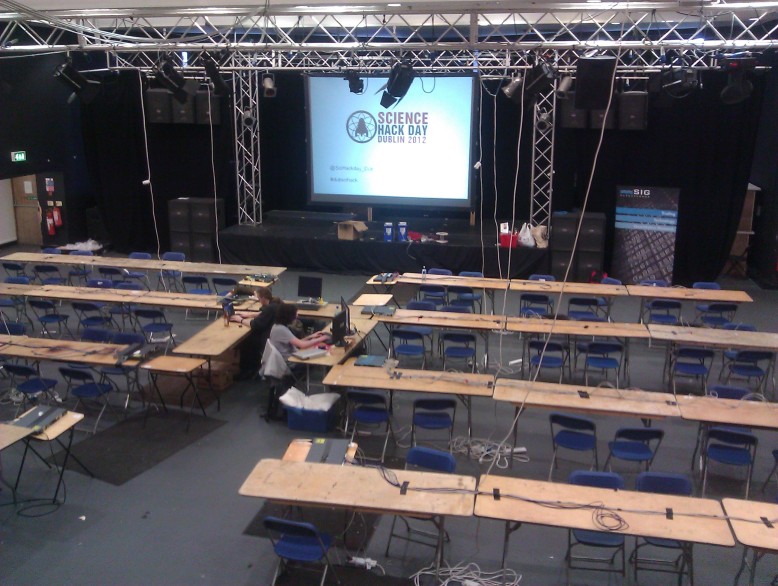At the beginning of the month (March 3rd and 4th to be precise), I had the pleasure of attending ScienceHackDay Dublin, which was a great big hackathon in the name of Science! A hackthon is basically a long session hacking away at your projects or your friends' projects, think staying up stupid late to get a paper in for a deadline, except more fun and the project is of your own choosing.


I did what I do best, and that's Science (and crochet). So from about midday on the Saturday (I had chatting/networking to do before that) until 1am and from 10am on the Sunday till lunch, I crocheted various cells. I devised my own patterns for them, and tried very hard to document them, so I have one for the red cell and the lymphocyte, and I have half patterns for the antibody and neuron. I started the neutrophil pattern with good intentions, but X died when I went off to find jelly babies so I lost the (unsaved half-finished) pattern.
The red cell is the first pattern I did that day, and documented as I went along. I'll put some more patterns up in the near future.
Red blood cell
dc = double crochet (that's UK dc, a US sc)
dc2tog = double crochet 2 together, it's a way of decreasing stitches (sc2tog for USians)
A magic circle is basically a loop you work into that can be tightened very tight to form a circle. Put two fingers together and wrap the yarn around them twice, then pick up a chain stitch as if these loops were your base stitch and work the rest of the row into the loops. When you get to the end of the first row, slipstitch to the first stitch and pull gently on the loops to work them tighter and tighter until you have no more hole, and that's a magic disappearing circle!
Start each round with a single chain, this doesnt count as a stitch. Finish each round by slipstitching to the first dc of the round.
When you get to the end, leave at least a 30cm tail to bind off. I find I often have big gaps that a bit of darning can cover up. You'll also have to put a stitch or two through the centre of the cell to pin the faces together in the characteristic biconcave shape.
- 12 dc into a magic circle
- 2 dc into each dc
- *2dc into next dc, 2dc into next dc, 1 dc into next dc* repeated to end of round
- *1dc, 1dc, 1dc, 1dc, into next four dc, 2dc into next dc* repeated to end of round
- dc into each dc to end of round
- Repeat round 4
- *1dc, 1dc, 1dc, 1dc, into next four dc, dc2tog in next two dc* repeated to end of round
- Repeat round 5
- Repeat round 5
- *dc2tog in next two dc, dc2tog in next two dc, one dc in next dc* repeated to end of round
- At this point stuff the cell, remember, red cells have this biconcave disc shape, where the edges are thick and the middle is thin.
- dc2tog until no stitches left